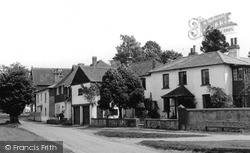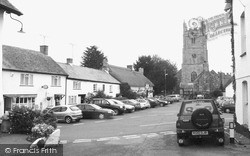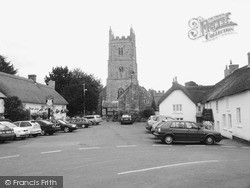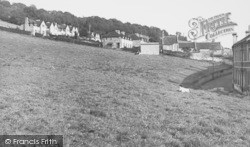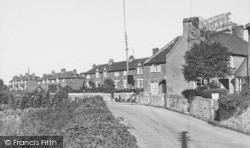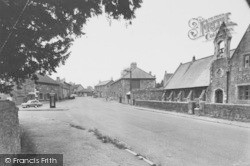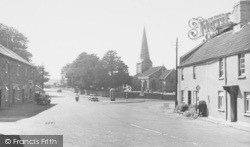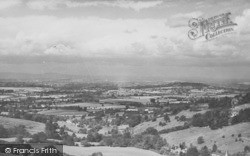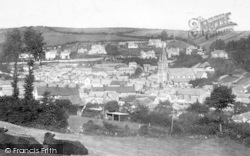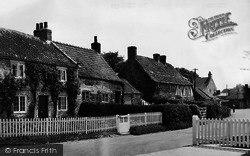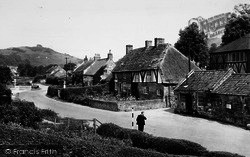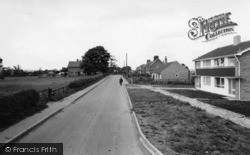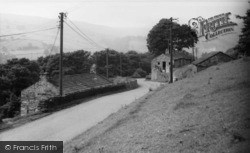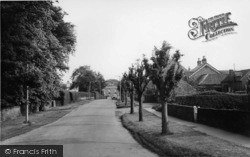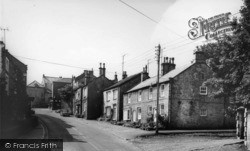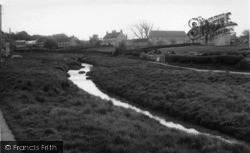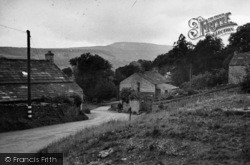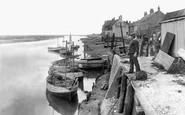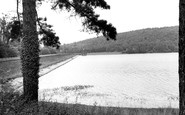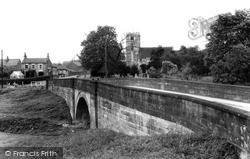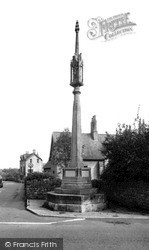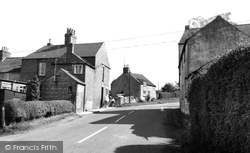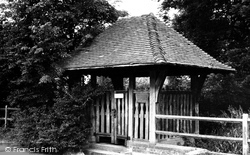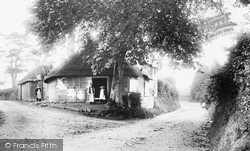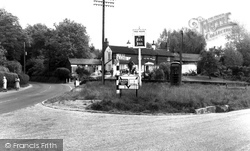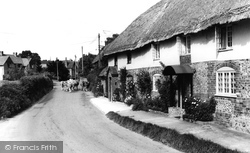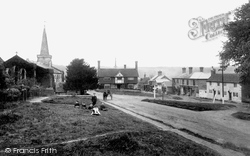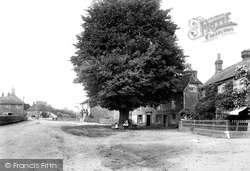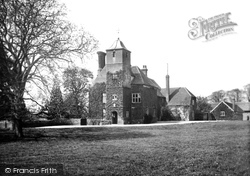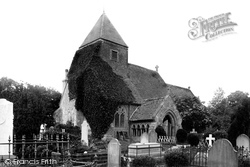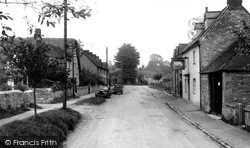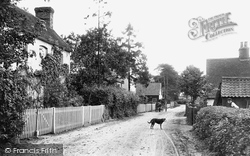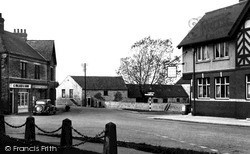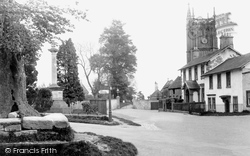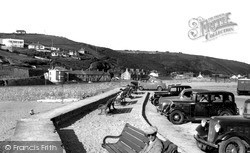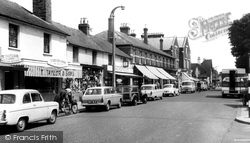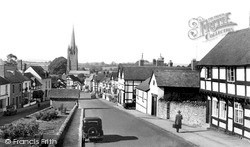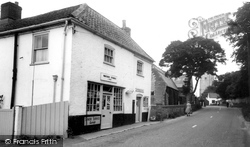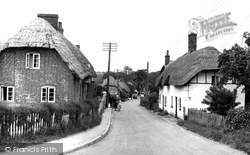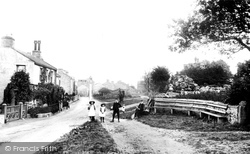Places
5 places found.
Those places high-lighted have photos. All locations may have maps, books and memories.
Photos
9,649 photos found. Showing results 741 to 760.
Maps
18 maps found.
Books
13 books found. Showing results 889 to 13.
Memories
4,612 memories found. Showing results 371 to 380.
The Churchyard
I happened upon Salcombe Regis by chance late April and what a magic sight the churchyard was. The huge low-hanging white blossom tree was magnificent and yellow and white daffodils scattered among the old lichen encrusted ...Read more
A memory of Salcombe Regis in 2010 by
A Year To Remember
How well I remember arriving at Wells-next-the-Sea from Leicester as a new bride. My husband was a former high school pen-friend who was now in England serving in the U.S Air Force, having been in the country from his ...Read more
A memory of Wells-Next-The-Sea in 1951 by
Memories Of Swithland
My first memory of Swithland Village goes way back to the days when I was very young. The war was over and we had become accustomed to Holidays at Home instead of going to the sea-side. My parents bought a chalet in what we ...Read more
A memory of Swithland in 1947 by
Sylvia Pearse
I remember your grandparents and Sylvia. They used to visit Central Villas a lot. Sylvia was a friend of Florence and Walter Bennett (sister and brother). My parents Rex and Gwen Harris lived next door. I was wondering what had ...Read more
A memory of Menheniot by
A Walk From Shotgate Baptist Church To The Nevendon Road Part 2 See Part 1 And 2 Below
Continued from Part 2 On the south side of the fire station were a few houses and then a footpath that led to the other entrance to the recreational ground. ...Read more
A memory of Wickford by
Where I Was Born
My Beginning, at Sole Street near Cobham Kent. (9th March 1946 - 2nd January 1951) I was born on Saturday March 9th 1946 at 3.29pm at Temperley, The Street, Sole Street, Kent. I was delivered at home by the ...Read more
A memory of Sole Street in 1946
Percy Main Village
I was born in 1947, and lived at number 14, Blyth Street, Percy Main village, my maiden name was Bell. My mam was called Ethel, dad was Bob, and my sister was Iris. When I was a child my granda Joe Bell, his daughter Phemie and ...Read more
A memory of Percy Main by
Oddington 1946 1959
I was born in Moreton in Marsh and lived the first 13 years of my life in Oddington. My father was a farmer and we lived at Green Farm right in the middle of the village. We used to have the village bonfire (November ...Read more
A memory of Lower Oddington by
Managers House
Because of my friendship with Helen Jones, the manager's daughter, I also went to play with her at her house, for me it was something very special because I had never been in such a big house before. It seemed so big, especially ...Read more
A memory of Abertysswg in 1956 by
Potts Ancestry Kibblesworth
My father Edward Potts was born in Kibblesworth in 1900 his brothers were William Potts, Noble Potts and his sister was Hilda Potts. All the brothers were miners in Kibblesworth. When dad married we moved to Birtley ...Read more
A memory of Kibblesworth in 1900 by
Captions
5,016 captions found. Showing results 889 to 912.
The parish church of St Helen stands sentinel over the bridge in the village of Stillingfleet, south of York.
Stratton is strung along the Fosse Way, a Roman road. Its elaborate and recently restored war memorial stands on the junction with Church Lane.
In the part-Norman parish church of this large and attractive village the great Isaac Newton was baptised.
The Parish Well was presented to the village by a resident of nearby Hawkridge in 1903. The well, no longer in use, stands beneath a tiled roof enclosed by wooden palings.
The road is Station Road, which today leads to the golf course.
The village blacksmith was then an important member of the community.
The Fox is still in business today, one of only two pubs in Hermitage. Today, the inn sign depicts a fox rather than merely the name of the pub.
Much of England's social history can be explored by examining the manorial structure of villages such as Melcombe Bingham.
An evocative view of wide shaggy grass verges, children and deserted roads characterises this view of Forest Row, the Ashdown Forest village that grew up on the site of Royal hunting lodges.
The village name used to be spelt as two separate words - North Chapel. When the roads became negotiable, a brick-built toll house was constructed here.
The village has a timeless feel about it. Near the church lies a quaint old pub known as the Horseguards Inn.
Panfield is a small village with no real focal point. The Hall occasionally throws open its farmyard and barns to host the village fête.
The Church 1890. The village lies inland from Hastings; its medieval church of St Leonard is isolated away from the houses among the trees.
The village of Cuddesdon had been the official home of the Bishops of Oxford for over 400 years, earning it the title of Oxfordshire's 'Holy Village'.
Cressing is an expanding village just to the south of Braintree. It has its own railway-station, formerly known as Bulford station.
Farm buildings in the heart of the village bear testimony to a time when most villagers worked on the land.
With a population of only about 250, Colerne is a small hill village with a superb church that has a slender Perpendicular west tower; it commands a magnificent elevation overlooking the village
Portreath was once a thriving little mining port at the terminus of Cornwall's first (horse-drawn) railway.
A line of parked cars, and a frozen foods van making a delivery, marks this mid-summer morning scene along the shopping centre of the village which, at the time, was already rapidly expanding.
When Leland visited Weobley in 1540 he described it as 'a market-town where there is a goodly castle, but somewhat in decay'.
The pretty little village of Barbon, near Kirkby Lonsdale, lies in the hills above the Lune Valley beneath Thorn Moor, on the minor road through Barbondale to Dent.
This little store and village post office is well remembered for being run for many years by the Moody family. Although the shop area is a little smaller, it is still going today.
The heart of the village retains its thatched roofs, with modern developments in pockets largely hidden from view. The pub sign at the Eagle can just be seen beyond the power pole on the right.
The village owes its fame to Aysgarth Force, which comprises three main waterfalls, and a number of cascades. The upper falls can still be viewed from a 16th century single-arch bridge over the Ure.
Places (5)
Photos (9649)
Memories (4612)
Books (13)
Maps (18)




